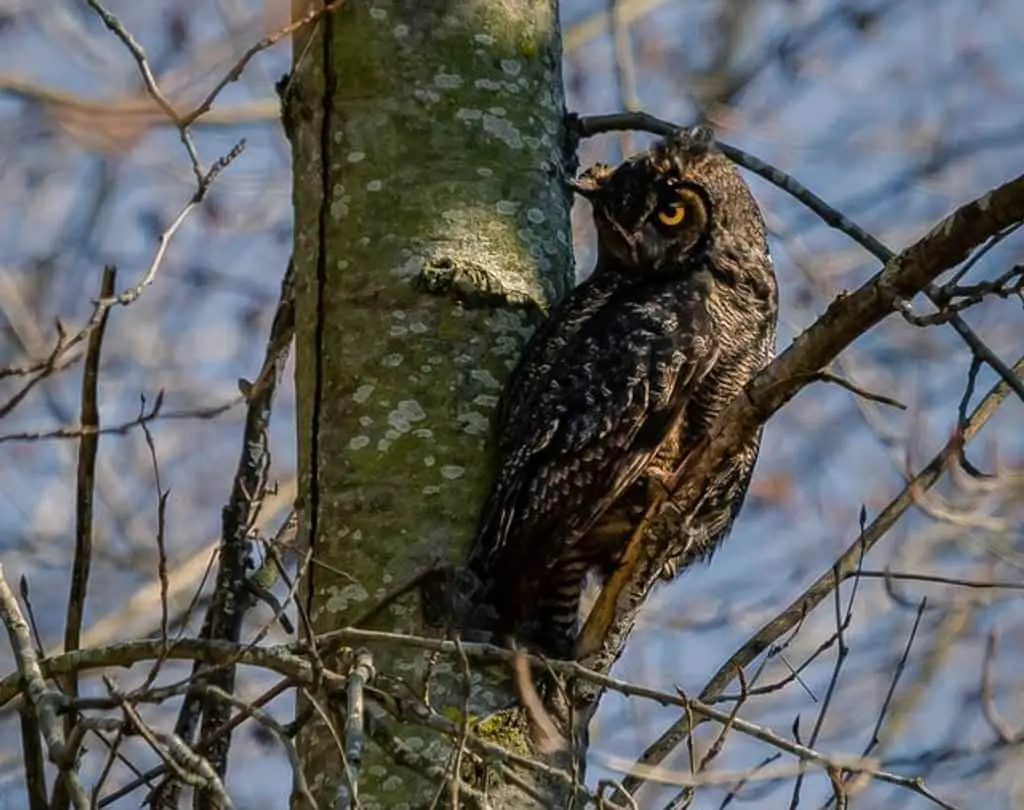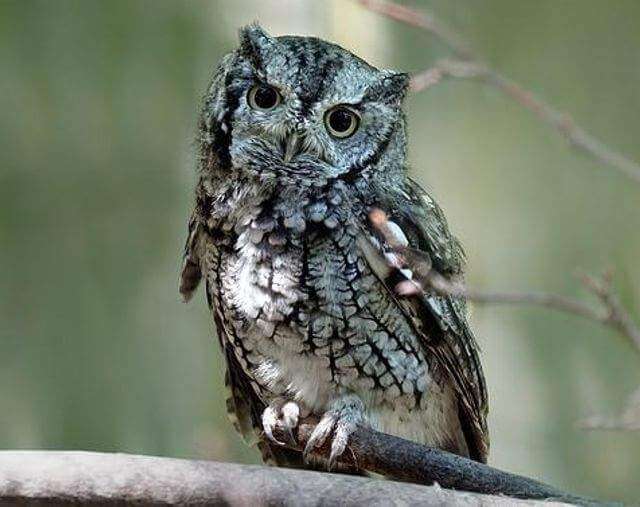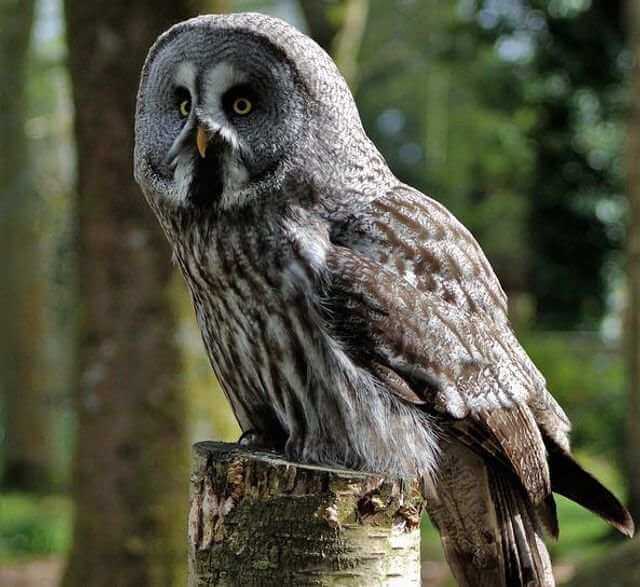Owls are one of the most popular bird species in Connecticut. There are twelve owls that can be seen in the state, and each has its own unique behavior and appearance. Some of these owls are very common and can be seen everywhere, while others are more rare and can only be found in certain parts of the state.
In this article, we will explore the 12 species of owls in Connecticut along with information on each owl species and includes photos, identification information, habitat requirements, and frequency of sightings.
Table of Contents [show]
Species of Owls in Connecticut
Barred Owl
- Length: 16.9-19.7″ in (43-50 cm)
- Weight: 16.6-37.0 oz. (470-1050 g)
- Wingspan: 39.0-43.3″ in (99-110 cm)
- Scientific Name: Strix varia
- Frequency of Occurrence: 1.70% (Statistic by: eBird)
- Where To Find Them: They are most commonly seen in the northern half of the state, including Hartford, New Haven, Stamford and Waterbury.
- How to Attract: Include plenty of tall trees in your backyard. Barred Owls love to perched high up in the trees, so make sure there are plenty of tall trees nearby for them to perch on. Make sure your yard is well-landscaped. A well-landscaped yard with plants and flowers will give the birds a place to hide and a place to explore. Place objects in your yard that the owls can use for nesting or roosting.
General Information: The Barred Owl is a medium-sized owl typically found in wooded areas across North America. The Barred Owl’s diet consists mostly of small mammals, such as rodents, but they will also eat birds, reptiles, and insects.
These owls nest in tree cavities, often using abandoned nests of other birds. Barred Owls are considered year-round residents in most of their range, but some populations in the northern parts of their range migrate south during the winter.
Great Horned Owl

- Length: 18.1-24.8 in (46-63 cm)
- Weight: 32.1-88.2 oz. (910-2500 g)
- Wingspan: 39.8-57.1 in (101-145 cm)
- Scientific Name: Bubo virginianus
- Frequency of Occurrence: 0.9503%
- Where To Find Them: In Connecticut, they are commonly seen in the northern part of the state near Hartford and New Haven. They can also be found in the vicinity of Providence and Boston.
- How to Attract: Give your property a well-rounded nature experience. Include plenty of tall trees and shrubs for nesting purposes, as well as dense undergrowth for cover. Create an environment that looks natural and isn’t too brightly lit or crowded. Keep human activity low key when possible. Don’t bring pets outside or leave lights on late at night when Owls are most active. And avoid making any loud noises that might scare them off.
General Information: The great horned owl is considered the most powerful raptor in North America. These owls live in a variety of habitats, from desert to tropical rainforest, and prefer open areas with plenty of trees for nesting and roosting. An adult great horned owl can most often be seen at night, but can sometimes be seen during the day.
They feed on a variety of prey, including small mammals, birds, reptiles, and amphibians. Great horned owls typically lay two eggs, which both parents help to incubate and care for.
Related Article: 35 Fun Facts About The Great Horned Owl (Detailed)
Eastern Screech-owl
- Length: 6.3-9.8″ in (16-25 cm)
- Weight: 4.3-8.6 oz. (121-244 g)
- Wingspan: 18.9-24.0″ in (48-61 cm)
- Scientific Name: Megascops asio
- Frequency of Occurrence: 0.3653%
- Where To Find Them: They are most commonly seen in open areas with plenty of trees, such as the forests near Stamford and West Hartford. They are also common along highways and other rural areas.
- How to Attract: Eastern Screech-owls will often forage for food in trees or on the ground, so providing them with an opportunity to hunt in your yard will help ensure they stay around. Make sure your yard has plenty of prey animals such as mice, squirrels, chipmunks or rabbits. These are the primary diet of Eastern Screech-owls.
General Information: The Eastern screech-owl is found in the eastern half of the United States and Canada. They inhabit deciduous and mixed forests, as well as woodlots, riparian corridors, and parks. These owls are cavity nesters and require a hole in a tree or cliff to nest in.
They typically lay 3-8 eggs and the young fledge about 5 weeks after hatching. Eastern screech-owls are opportunistic predators and feed on a variety of prey items, including small mammals, birds, reptiles, amphibians, and invertebrates.
Snowy Owl
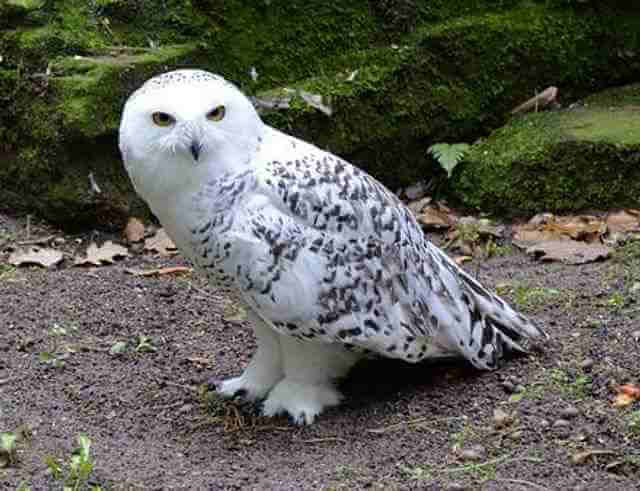
- Length: 20.5-27.9 in (52-71 cm)
- Weight: 56.4-104.1 oz. (1600-2950 g)
- Wingspan: 49.6-57.1 in (126-145 cm)
- Scientific Name: Bubo scandiacus
- Frequency of Occurrence: 0.3021%
- Where To Find Them: Some areas where you might see a snowy owl are in the Adirondacks, Maine, and Vermont. These birds are typically seen hunting during the day or at night, but they have been known to sometimes visit populated areas.
- How to Attract: Plant trees that provide a high level of nesting cover for the owls. These include boreal pine, spruce, balsam fir and white cedar. Create areas of open ground where the owls can perch and hunt. This could include an unused piece of land next to a garden or an opening in a fence or tree line.
General Information: Snowy owls are some of the most beautiful and majestic creatures in the world. They are typically found in the tundra region of the Arctic, but during winter they sometimes migrate to more southern areas. Their diet consists mostly of small rodents, but they will also eat birds, fish, and insects.
Snowy owls build their nests on the ground, often near water. The range of the snowy owl is vast, and they can be found in many different habitats, including forests, meadows, and wetlands.
Northern Saw-whet Owl
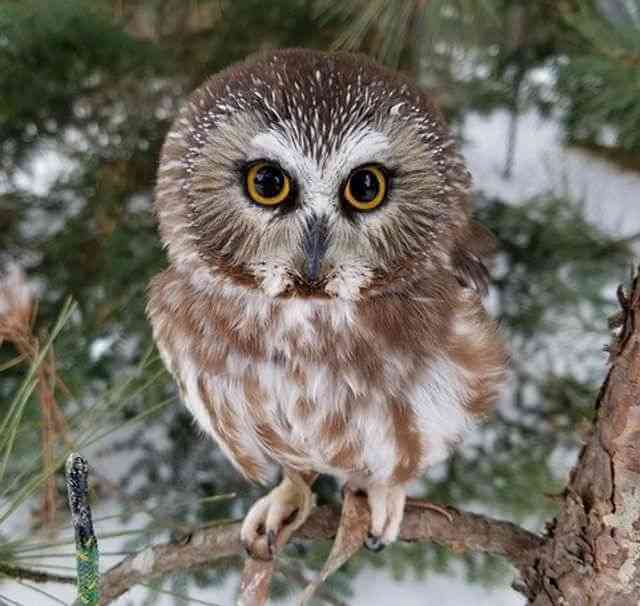
- Length: 7.1-8.3 in (18-21 cm)
- Weight: 2.3-5.3 oz. (65-151 g)
- Wingspan: 16.5-18.9 in (42-48 cm)
- Scientific Name: Aegolius acadicus
- Frequency of Occurrence: 0.1281%
- Where To Find Them: Northern Saw-whet Owls are a common sight in the northern part of Connecticut. Locations where they can be found include around the Hartford metro area and beyond, as well as in parts of New England.
- How to Attract: Place a nest box near a desirable area such as a tree or shrub. This will encourage the owls to start nesting there and increase the chances that you’ll see one in person. Set up some artificial owl decoys around your yard. These look like real owls and can be purchased at most craft stores or online. They will lure the birds in close enough for you to take pictures or video of them. Install an outdoor security camera and use motion detection software to record when owls enter and leave your property.
General Information: The Northern Saw-whet Owl is a small owl native to North America. They are typically found in dense forests and wooded areas. They are well adapted to living in dense forest with their camouflage coloring and their ability to fly silently.
The Northern Saw-whet Owl diet consists mostly of small rodents such as mice, voles, and rats. They will also eat small birds, insects, and other small prey. The Northern Saw-whet Owl nests in tree cavities or abandoned bird nests.
Related Article: What is the Smallest Owl in North America?
Long-eared Owl

- Length: 13.8-15.8 in (35-40 cm)
- Weight: 7.8-15.3 oz. (220-435 g)
- Wingspan: 35.4-39.4 in (90-100 cm)
- Scientific Name: Asio otus
- Frequency of Occurrence: 0.0719%
- Where To Find Them: The Long-eared Owl is a common sight in many parts of Connecticut. They can be seen throughout the state, but are most commonly spotted in the New London, Norwich and Westport areas. They prefer open areas with plenty of trees and are usually very shy birds.
- How to Attract: One of the best ways to attract a Long-eared Owl is by providing them with a nesting site. This could be in a tree or on the ground; just make sure it’s away from other animals and human activities. If you can, offer food and water in the vicinity of the nest as well. Another way to lure in this owl is by getting creative with your landscaping.
General Information: Long-eared owls are widespread and can be found in a variety of habitats. They reside in open country such as meadows, prairies, and farmland as well as woodlands. These owls mainly eat small mammals such as mice, voles, and rabbits; they will also consume insects, reptiles, and amphibians.
Long-eared owls build their nests in trees or on cliffs, often using conifer branches for the structure. Females lay 2-6 eggs which hatch after about 28 days incubation. Young owls fledge around 8 weeks after hatching.
Short-eared Owl
- Length: 13.4-16.9 in (34-43 cm)
- Weight: 7.3-16.8 oz. (206-475 g)
- Wingspan: 33.5-40.5 in (85-103 cm)
- Scientific Name: Asio flammeus
- Frequency of Occurrence: 0.0701%
- Where To Find Them: Some popular spots include the Taconic Mountains, the Mohegan Sun Resort, and Woodstock.
- How to Attract: They are fairly common and are often seen perched in trees or on high perches. One way to attract the owl is to provide plenty of food and places to perch. You can also set up a nest box for them if you have one available.
General Information: Short-eared Owls are found in open country and marshes throughout North America. They prefer prairies, meadows, and open woodlands, but can also be found in agricultural areas and even cities. These owls hunt during the day and eat a variety of small mammals, including voles, mice, rats, rabbits, and hares.
They also eat birds, lizards, snakes, and insects. Short-eared Owls build their nests on the ground near water sources such as ponds or marshes. The nests are made of sticks and lined with grass or other vegetation.
Barn Owl
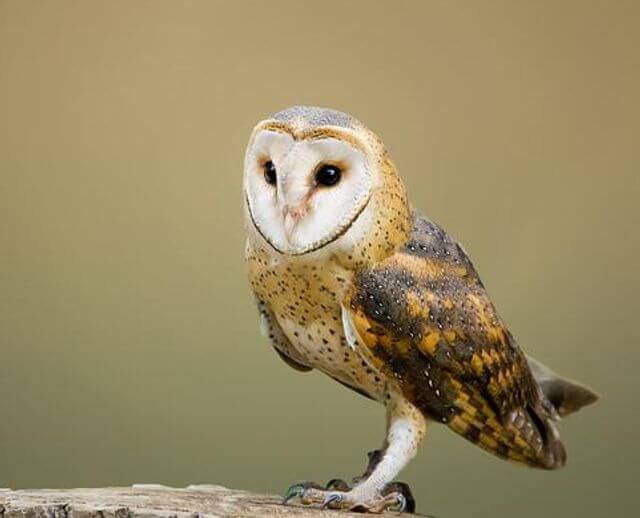
- Length: 12.6-15.8″ in (32-40 cm)
- Weight: 14.1-24.7 oz. (400-700 g)
- Wingspan: 39.4-49.2″ in (100-125 cm)
- Scientific Name: Tyto alba
- Frequency of Occurrence: 0.0063%
- Where To Find Them: Barn Owls are seen throughout Connecticut, but they are most commonly found in the central and southern parts of the state. They can also be found in a few locations in New Hampshire and Massachusetts, but they are much less common. Barn Owls are usually shy and will avoid humans, but if you’re lucky enough to see one close up, it’s an amazing sight!
- How to Attract: Make a nest box out of some sturdy wood or metal. Barn owls love to nest in natural surroundings, so building them a nest will help ensure they stay around your property. You can find pre-made nest boxes at most pet stores or hardware stores. Feed them regular fresh food. Barn owls hunt primarily at night, so providing them with healthy food will help keep them active during the daylight hours. Consider offering mice or other small prey. Keep your yards clean and tidy.
General Information: The barn owl is a common but elusive bird that ranges across most of the United States. The primary habitat for this bird is open country with scattered trees and a few perches. Barn owls are also found in parks, golf courses, and other semi-urban areas.
They eat small mammals such as rats, mice, voles, and rabbits. They also consume a variety of birds, reptiles, and amphibians. Barn owls nest in tree cavities, old buildings, or abandoned nests of other birds. They typically lay five to seven eggs at a time.
Boreal Owl
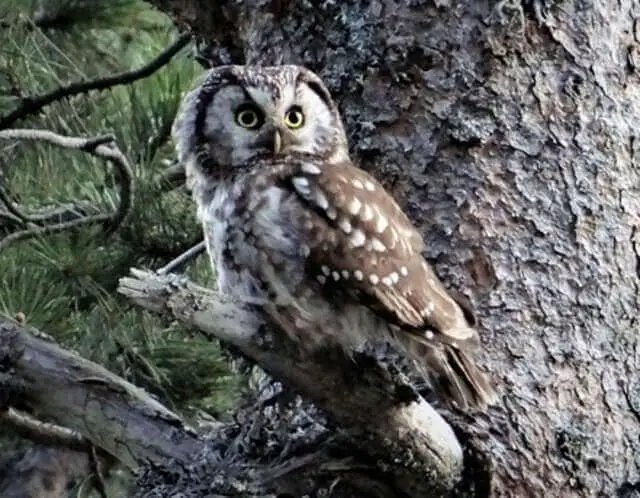
- Length: 8.3-11.0 in (21-28 cm)
- Weight: 3.3-7.6 oz (93-215 g)
- Wingspan: 21.6-24.4 in (55-62 cm)
- Scientific Name: Aegolius funereus
- Frequency of Occurrence: 0.0010%
- Where To Find Them: In Connecticut, they have been spotted in the Northwest corner near the Canadian border, and also in the Northeast corner. They tend to prefer areas with dense forest, but can also be found around open fields and meadows.
- How to Attract: Boreal owls are one of the most beautiful owl species in North America. Here’s how to attract them: Try to find a open habitat where they can hunt for food. Try to provide them with a good food supply, including rodents and small birds. Keep your distance from these owls, as they can be defensive when approached too closely.
General Information: The Boreal Owl (Aegolius funereus) is a small owl found in North America and Eurasia. It is the smallest owl in North America, and is about the size of a robin. The Boreal Owl ranges across Canada and Alaska, south through the Rocky Mountains to New Mexico, and east to Pennsylvania and Connecticut.
It has also been observed in northern Europe and Asia. The Boreal Owl inhabits dense forests of conifers and mixed hardwoods. It feeds on small rodents, such as voles, shrews, and mice. The Boreal Owl nests in tree cavities or abandoned hawk or crow nests.
Great Gray Owl
- Length: 24.0-33.0 in (61-84 cm)
- Weight: 24.7-60.0 oz. (700-1700 g)
- Wingspan: 53.9-60.2 in (137-153 cm)
- Scientific Name: Strix nebulosa
- Frequency of Occurrence: 0.0003%
- Where To Find Them: Great Gray Owls are found throughout most of Connecticut but are especially common in the Northern and Central parts of the state. They have also been seen in New London and Norwich.
- How to Attract: The great gray owl is not a common owl and it is not easy to attract them. One way to attract them is to put up a nest box. You can also try to put out food for them, but this is not necessary. The best way to attract these owls is to provide them with a good habitat with plenty of trees and cover.
General Information: The Great Gray Owl is the largest owl in North America. It lives throughout much of the eastern and central United States, as well as parts of Canada. Great Gray Owls prefer forested areas with open spaces for hunting. They eat mostly small mammals such as rabbits, hares, mice, and voles.
They also eat birds and some insects. Great Gray Owls build their nests on the ground or in a tree cavity. The female lays 2-5 eggs, which both parents help to incubate. The young owls fledge at around 4-6 weeks old.
Related Article: 53 Fun Facts About The Great Gray Owl (Photos, ID & Info)
Northern Hawk Owl
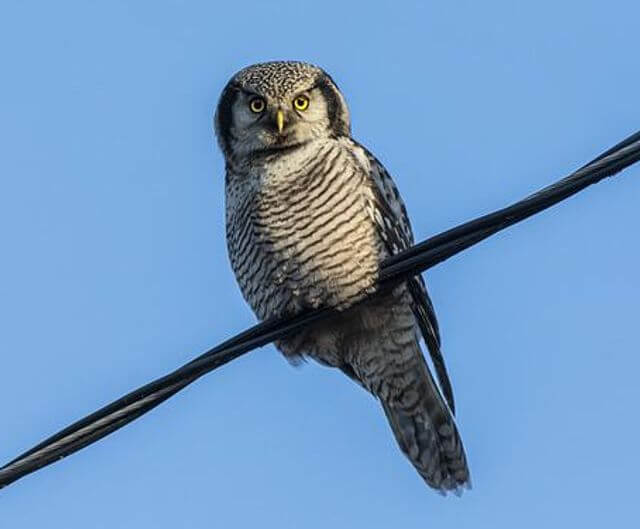
- Length: 14.2-17.7 in (36-45 cm)
- Weight: 8.5-16.0 oz. (240-454 g)
- Wingspan: 27.9 in (71 cm)
- Scientific Name: Surnia ulula
- Frequency of Occurrence: 0.0001%
- Where To Find Them: Northern Hawk Owls are generally seen in the northern part of Connecticut, which includes the Hartford/New Haven area. They can also be found in parts of Massachusetts and New York.
- How to Attract: One way to attract a Northern Hawk Owl to your backyard is to provide an adequate amount of shelter. This means having plenty of trees and large shrubs for them to hide in. Open areas with good visibility are also important, as the owl prefers to hunt in the open. Providing a water source is another way to make your yard more hospitable to these birds.
General Information: The Northern Hawk Owl is a medium-sized owl that can be found in North America and Eurasia. In North America, their range extends from Alaska to Newfoundland, and they are also found in parts of Central America. They reside in a variety of habitats, including boreal forests, coniferous forests, deciduous forests, and open areas.
Northern Hawk Owls feed on small mammals, such as rodents, rabbits, hares, and bats; as well as birds, reptiles, amphibians, and insects. They make their nests in trees or on cliffs.
Burrowing Owl
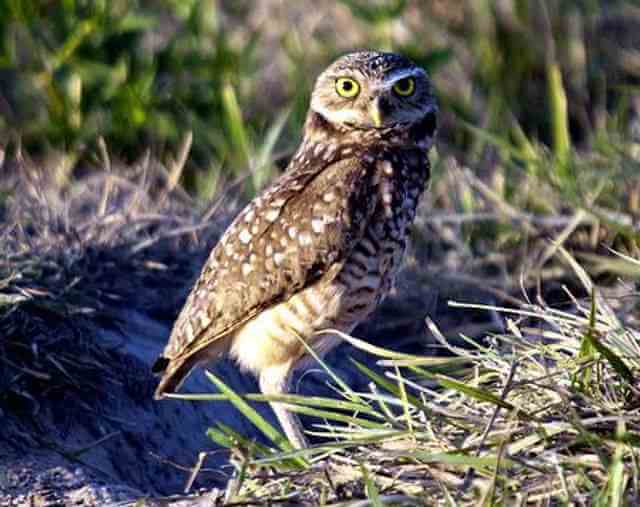
- Length: 7.5-9.8″ in (19-25 cm)
- Weight: 5.3 oz. (150 g)
- Wingspan: 21.6″ in (55 cm
- Scientific Name: Athene cunicularia
- Frequency of Occurrence: 0.0001%
- Where To Find Them: They are most commonly seen in the southwestern and southeastern parts of the state, but have been spotted as far north as Hartford and New London.
- How to Attract: One way to attract Burrowing Owls to your backyard is to provide them with a perch on which they can sit, such as a platform or post. You can also place some artificial burrows in your yard to give the owls a place to roost. It is important to keep your yard free of debris, such as fallen branches, so the owls have an easy place to hunt and find food. Providing water for the owls is also essential, as they need a place to drink and bathe.
General Information: The Burrowing Owl is a small, long-legged owl that is well adapted to life in the open desert. It ranges from southern Canada to central Mexico, and from Utah and New Mexico east to Florida. Burrowing Owls are found in a variety of open habitats, including prairies, deserts, agricultural fields, and grasslands.
They forage on the ground for small mammals, reptiles, amphibians, and insects. They also eat lizards, small vertebrates and snakes. The Burrowing Owl nests in underground burrows that it excavates or borrows from other animals.
Related Article: Really Cool Burrowing Owl Facts That Will Amaze You!
Frequently Asked Questions
What is the largest owl in Connecticut?
The largest owl in Connecticut is the great horned owl, which can be found in many parts of the state. These owls are scarier than other owls because they have a large horns on their head.
Where can I see owls in Connecticut?
Owls are generally shy animals and it can be difficult to spot them in Connecticut. The best places to see owls in the state are at either of the two nationally designated owl sanctuaries, the Guilford Pequot National Wildlife Refuge and the Kents Hill National Wildlife Refuge.
Are owls good to have around your house?
There are a few things to keep in mind when thinking about whether or not to have a wild owl around your home. First of all, these animals can be dangerous. They can attack people and pets if they feel threatened or if they feel like their territory is being invaded.
Additionally, owls can cause structural damage to homes if they get caught up in the ductwork or wires inside the building. So, while it might be fun at first to watch an owl fly around your yard, it’s important to be aware of the risks involved before making any decisions.
Do barn owls live in Connecticut?
Barn owls are a common sight in Connecticut. They can be found living in many locations, but some of the most popular ones include parts of Fairfield, Hartford, Middlesex, New Haven and Tolland counties.
Do barred owls live in CT?
Barred owls are a common sight in Connecticut, and for good reason. The owls are the most frequently seen owl in the state. They can be found throughout the state, but are especially common in rural areas and open forests.
Are there snowy owls in CT?
Over the course of a winter, Connecticut may see a handful of snowy owls. These magnificent birds are not only adaptable, but they can also survive in colder climates thanks to their dense plumage and robust wings. In fact, the snowy owl is one of the most successful owls in North America, making it common to find them throughout Connecticut during the winter months.
Where is the snowy owl in Connecticut?
The snowy owl is a beautiful and elusive bird found throughout most of North America, but Connecticut. The state has several locations where you can find the owl in natural habitat, including the Delaware National Wildlife Refuge and the Rocky Hill Wildlife Management Area.
Do great horned owls live in CT?
Yes, there are a few scattered populations of great horned owls living in the state. These birds can be found in habitats such as woodlands, marshlands and mountains.
Related Post: 52 Most Common Backyard Birds in Connecticut (2022)

